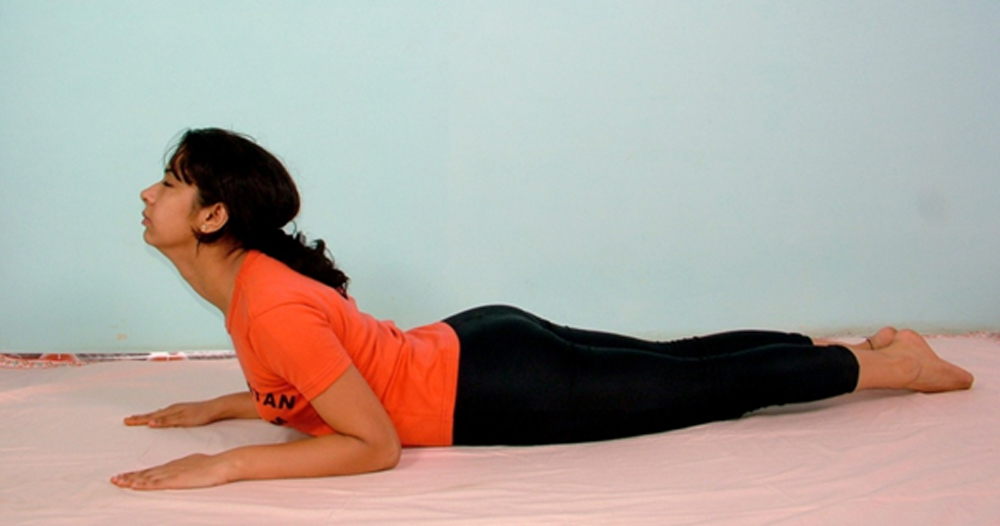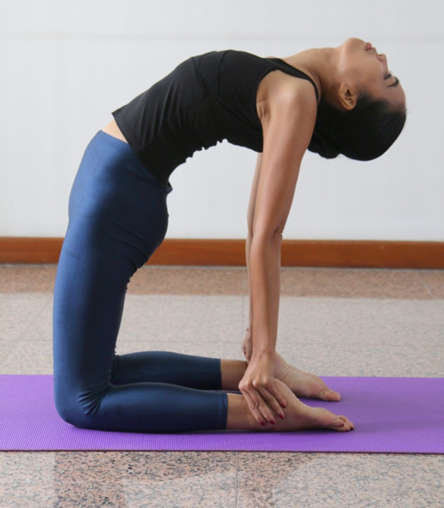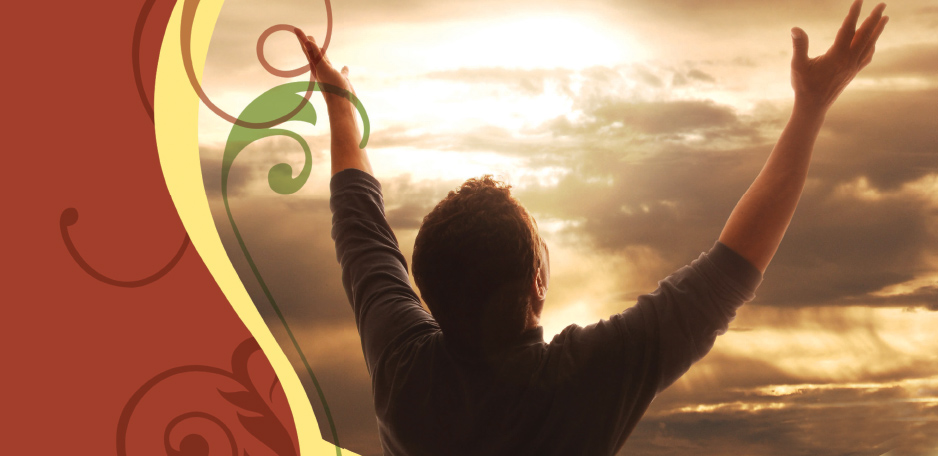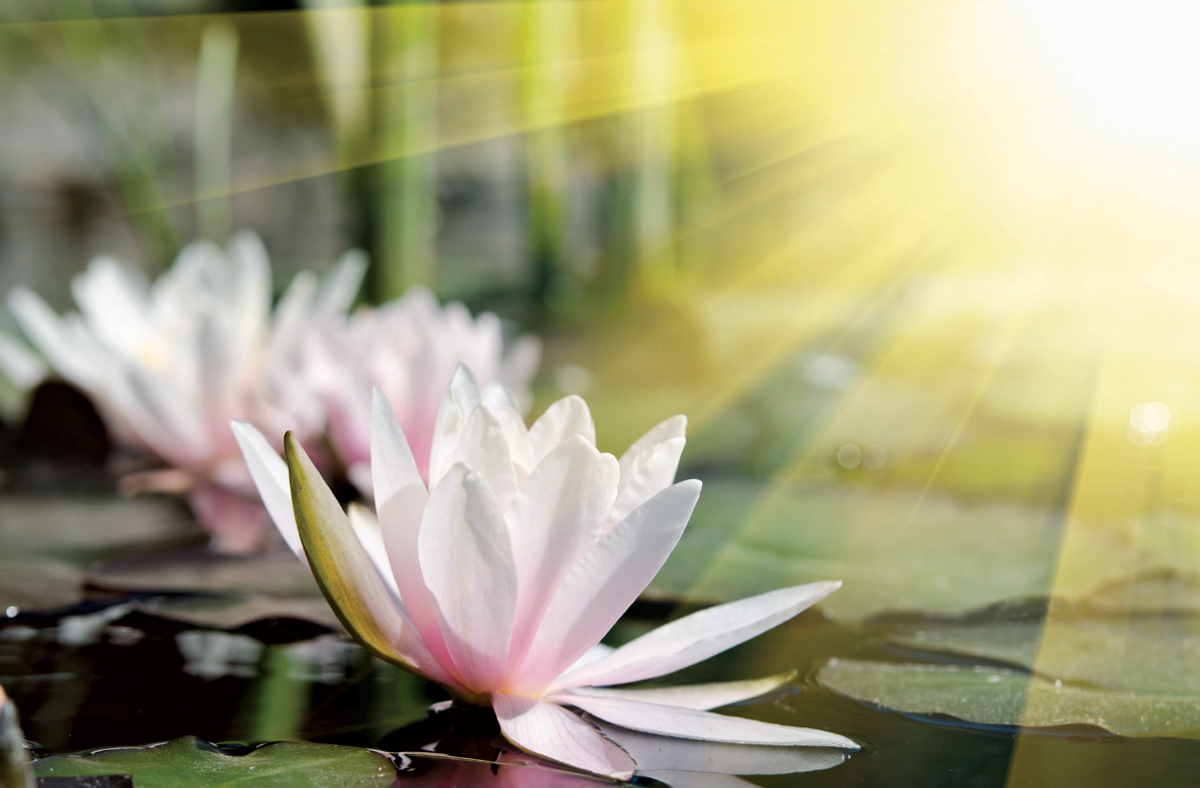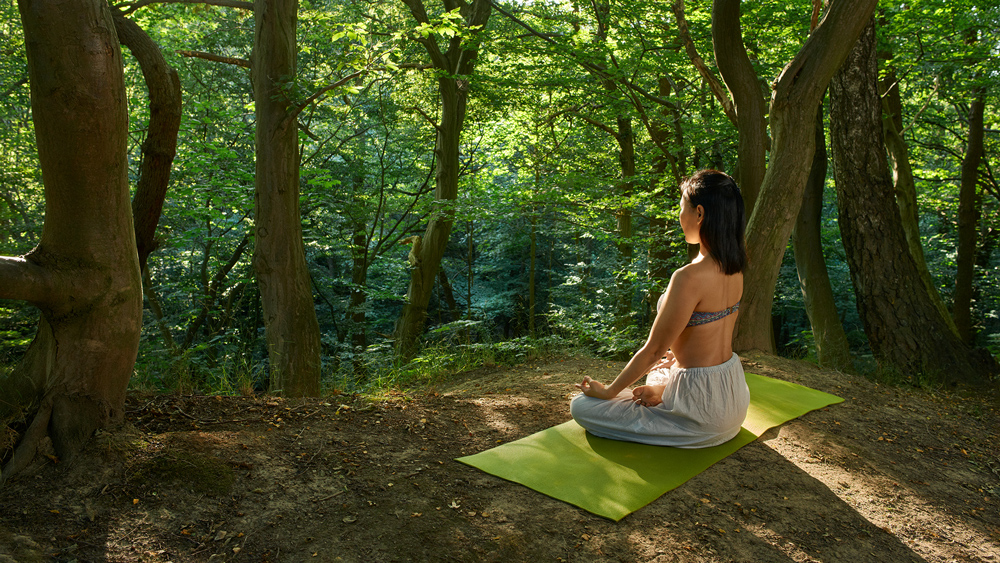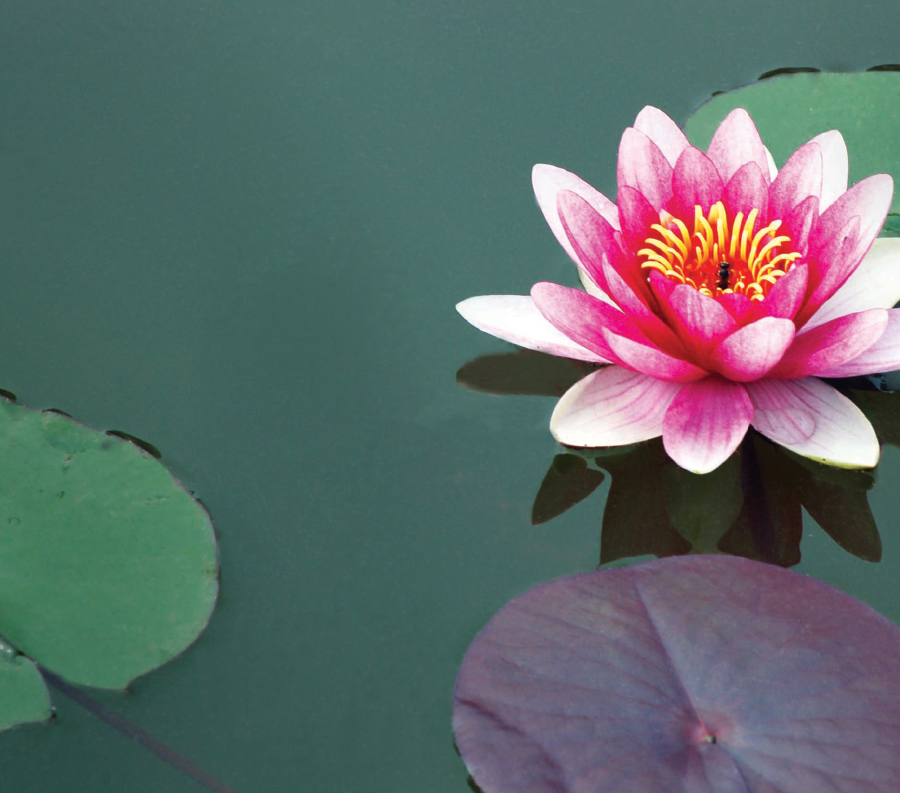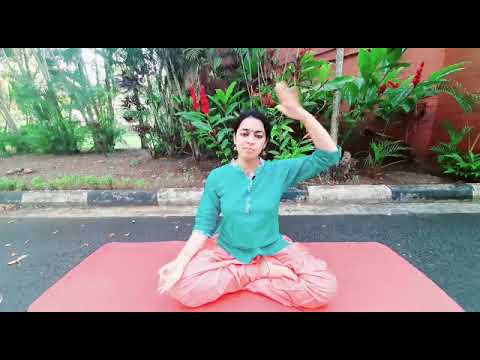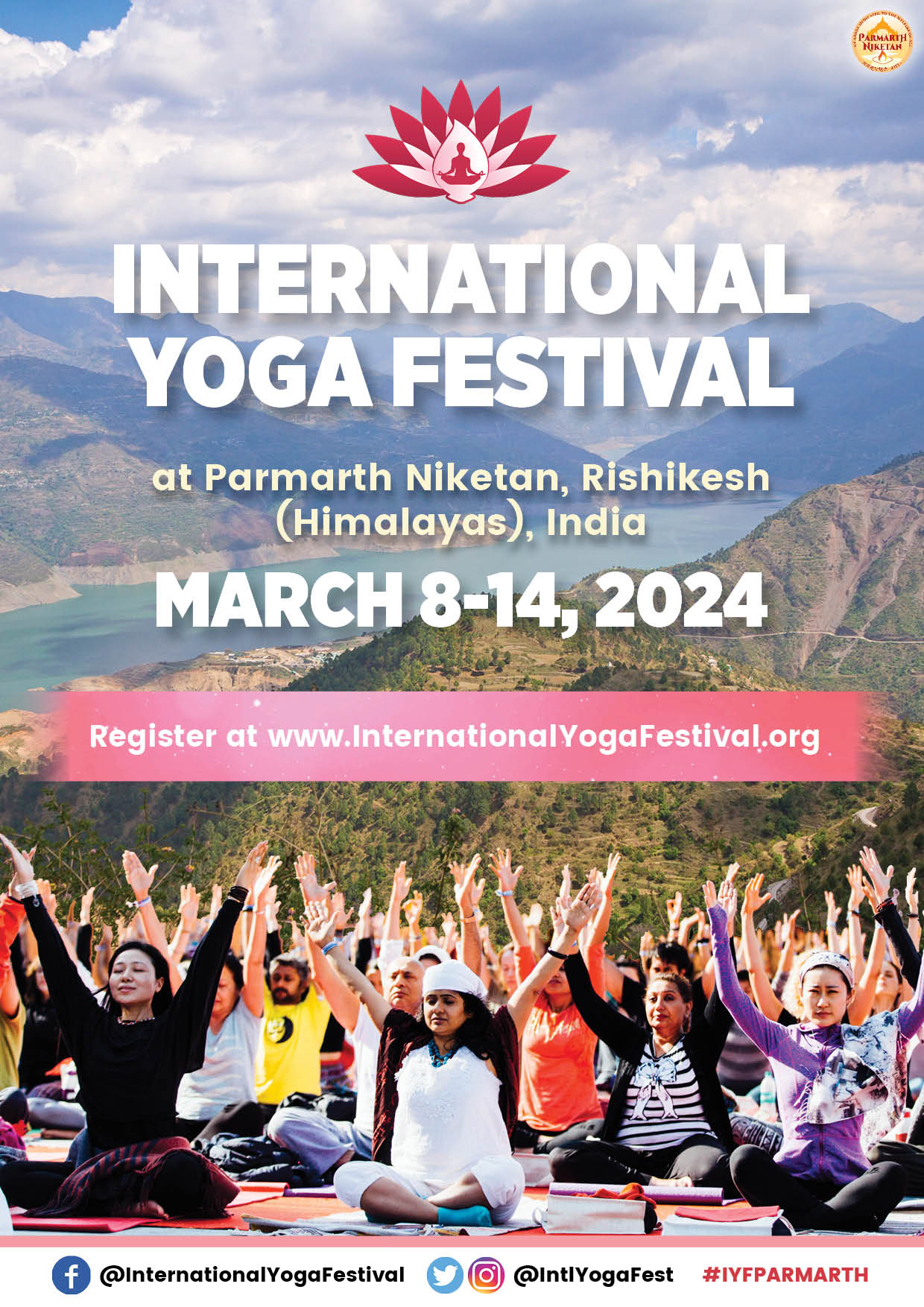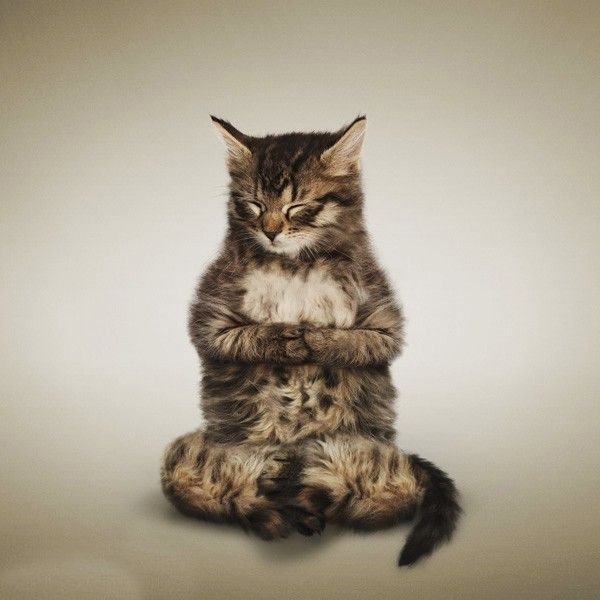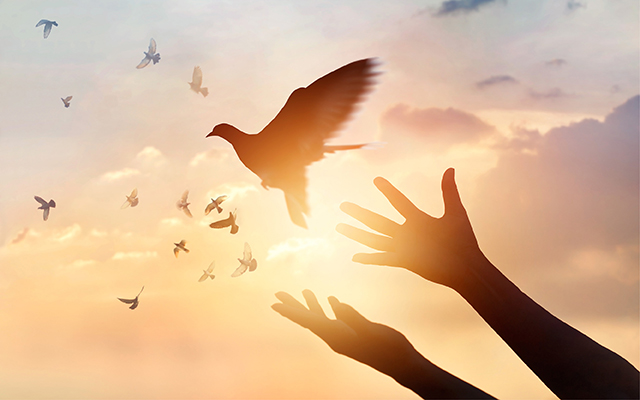Yoga is not about making only our bodies healthy, strong and flexible; it teaches us to make ourselves healthy, strong and flexible.
The secrets of the ancient science of yoga were passed down from the divine seers to the sages who came to the Himalayas for divine inspiration. Through their meditation, austerities and prayers, a treasure chest of wisdom was bestowed upon them for the benefit of humanity. Sage Patanjali is renowned for compiling this treasure chest of yogic wisdom for the benefit of the world.
Yoga is not a religion. It does not require you to believe in a certain God or to chant mantras. It is an ancient science, which leads to health in the body, peace in the mind, joy in the heart and liberation of the soul.
People take yoga classes to learn about the various techniques of hatha yoga, pranayama and meditation. But yoga is more than that. Yoga is a way of life, and its teachings should penetrate every aspect of your being – from your thoughts to your speech and to your actions.
Yoga as Union
Yoga encompasses “asana” (postures) and “pranayama” (breathing exercises), but ultimately the word “yoga” actually means “union.” Union of what? Union of the self with the Divine. That oneness with the Divine, is what we are striving for, in our lives. Lack of unity is the cause of all problems in the world – both on a personal level and on a global level. Personally, we are not united with ourselves. We are constantly at war with our mind and our heart, our desires, our fears, our confusions. There is no balance, no harmony, no unity within ourselves. We feel alone, we feel scared, we feel that everything is on our own shoulders. In our families also, unity is not there. So we frequently fight with each other, manipulate each other, and criticize each other.
Unity is also lacking in our communities. “I do Iyengar yoga. I do Anasura yoga. I do Bikram yoga. I do Kundalini yoga. My type of yoga is better than your type of yoga.” Even though we are all practicing the art of Union, still we are divided!
And of course, in the world we are divided – by nations, by religions, by color.
Yoga, therefore, in its fullest and most complete meaning is truly the panacea for all that which ails us, for all that which divides us, from the most basic personal level to the most complex global level. But, how do we find that union? How do we become united?
8 Limbs of Yoga
In his compendium of wisdom, inspiration and insight, titled the Yoga Sutras, Patanjali explains yoga as an 8-limbed tree, with the highest branch being Samadhi, or the ultimate, divine bliss and ecstasy which comes from a complete, transcendental union with the Divine.
The foundation of the tree are the Yamas and Niyamas (the moral and ethical codes of conduct) and one moves upward through asana and pranayama, which use the body and the breath as the medium, then into the aspects in which one’s mind becomes fine-tuned and united with God, and ultimately to the state of divine liberation.
But when I say you will attain liberation, I am not talking only about an abstract and vague concept in which – after death – you merge into Oneness with the Divine. No, I am talking about liberation here on Earth. Liberation while living, liberation every moment of every day. What is that liberation? It is liberation from anger and greed. It is liberation from worry and desires. It is liberation from despair and depression.
But one has to begin at the foundation and move upwards. Let us take these eight limbs, one by one, and see what they mean for us in our lives. So, let us talk about these eight limbs of the tree of yoga, the tree of Divine Union.
“Yoga is a way of life, and its teachings should penetrate every aspect of your being – from your thoughts to your speech and to your actions.”
Yamas & Niyamas
We begin at the foundation with the Yamas and Niyamas. Oneness with God, unwavering peace, ecstatic joy and ultimate fulfillment in life – of our external, physical desires as well as our internal, spiritual desires – can only come if we abide by the natural laws of dharma. These laws are descibed simply and comprehensively in the first two “limbs” the Yamas and Niyamas. We begin with the five Yamas – the moral restraints and injunctions which, when followed with dedication and discipline, help us become the master of our bodies, minds and lives.
1. Ahimsa – Non-violence
This is the fundamental, most basic and crucial tenet of living as a good human. Do not cause pain or injury to another. However, Ahimsa does not pertain only to our physical actions. It does not simply mean, “Thou shalt not kill” or “Thou shalt not hit.” Rather, it encompasses all forms of violence – violence in thought, violence in speech and violence in deed. We must think pure and loving thoughts. We must speak pure and loving words, and we must practice pure and loving acts.
Further, Ahimsa does not only call upon us to live peacefully with other human beings. Rather, the meaning of Ahimsa encompasses all beings, all creatures and all life on the planet.
It includes the animals as well as nature. This means, of course, that one should be a vegetarian and shun products that are made through violence to animals (either through using animal products or through cruel testing on the animals). It also means that one must take care of nature, protecting and preserving our natural resources.
Moreover, the law of Ahimsa goes even deeper than that which we do to others. It also includes that which we do to ourselves. When we smoke cigarettes, take drugs, eat food that we know leads to heart disease or diabetes, get involved in relationships in which we are abused, victimized and suppressed, or when we simply waste our precious time engaged in meaningless activity – these are all ways in which we injure ourselves.
2. Satyam – Truthfulness
This tenet also goes deeper than its mere meaning. Yes, of course we must speak the truth; but that is not enough to say we are practicing Satyam. We must also live the truth. Our thoughts, our values, our words and our actions must all be aligned. Many times we say one thing in front of others, or in the temple, or to impress people, but we act in a different way. I have even heard parents tell their children “Do as I say, not as I do.” This is not Satyam. Satyam means – “As I say, so I do.” Satyam means, being true to our promises and vows, fulfilling our word to ourselves, to others and to God.
But satyam doesn’t mean we have to tell everything. I have seen, particularly in the West, people who are on a spiritual path think that being truthful means telling 100% of the truth, in all circumstances, to everyone. This is not the case. Our scriptures clearly say that we should practice that speech which is truthful, kind and beneficial. So, if thetruth is neither kind nor beneficial to the listener, then it should not be spoken.
“Lack of unity is the cause of all problems in the world – both on a personal level and on a global level. Personally, we are not united with ourselves.”
3. Asteya – Not Stealing
Asteya is not as simple as refraining from stealing a possession that belongs to someone else. We steal much from others without realizing it. We steal people’s time, by wasting it, engaging in idle gossip or complaints. We steal people’s credit, by claiming to have done something that actually was accomplished by someone else. We steal from Earth/nature by using more than we need – by driving cars that are too big and use too much fuel, by building homes larger than our requirement, by purchasing more and more unnecessary possessions that are made using natural resources and whose production pollutes the atmosphere. We steal the dignity, the safety and the health of the poor, when we purchase things that were made by people in deplorable conditions. Further, if God has blessed us with prosperity and we have enough to help others, it is stealing if we do not share our wealth. We must realize the joy that comes from sharing with others. Life is for sharing and caring. Life is for giving.
4. Brahmacharya
Brahmacharya is frequently translated as celibacy or abstinence, but actually its meaning is more comprehensive than refraining from sexual activity. Rather, it actually means one who is brahma-acharya, this means one whose actions are all dedicated to God, one whose actions are all pure and holy. It means one whose attention, energy and life are focused on God. These Yamas and Niyamas are not applicable only to celibates, sanyasis or monks. Rather they were laid out by one of the greatest sages of all times, for all of humanity. Therefore, the law of Brahmacharya
also pertains to those on the householder path. What does it mean? It means restraint. It means moderation. It means, realizing that the purpose of life is much greater and far deeper than continually fulfilling one’s sexual urges. It means that all of our relationships should be ones in which we are moving closer and closer to the Divine. We should not entertain any relationships in our lives, which are taking us off the track of our spiritual growth. By over-engaging in sexual activity, our minds and attention divert, and our vital energy gets dissipated. So, even if you are married, still one must try – as much as possible – to move beyond the realm of the body to the realm of the spirit. We must ensure that those relationships we have, which do include physical intimacy, are loyal, honest, loving and are dedicated to bringing us closer and closer to God.
5. Aparigraha- Non-accumulation
Aparigraha literally means “nonhoarding.” It means don’t take more than you need – in any area of life. Mahatma Gandhi said it beautifully: “There is more than enough for everyone’s need, but not enough for any man’s greed.” It means, live simply. Use only that which you require. Purchase only that which is essential. It doesn’t mean that everyone must live like a wandering monk, but it means that we must cultivate a sense of moderation and simplicity; regardless of our financial means, we should not live extravagantly or surround ourselves with unnecessary possessions.
Travel light! If you came here for the weekend and brought 10 suitcases full of fancy yoga clothes, fashionable suits for every activity, and other unnecessary items you would go through a very difficult time at the airport! First of all, they would charge you a lot of excess baggage. Second, you would hurt your back and arms trying to lift everything. Third, it would take you a very long time to get from baggage claim to the car, from the car to the hotel, from the hotel to your room, etc. Then your room would be cluttered with so many suitcases and, of course, you’d never be able to find what you were looking for!
But, if you came with just one small bag, with the bare necessities – clean clothes for each day, your bathroom articles, a book to read – you’d pass easily through every step of the journey. You would never be weighed down, slowed down, inconvenienced, and you wouldn’t hurt your back!
The same is true in life also. The more we try to accumulate, the more we acquire, the more we get bogged down, and the more difficulties we face. So, travel light in life and you will find that you progress quickly and easily.
Aparigraha also means that there should be no sense of “mine” in life. We should realize that everything belongs to God and we have simply been lent a certain amount for a temporary period of time. In yagna ceremonies, after each mantra, the priest chants “idam namamah.” It means “Not for me, God. It is for you, God.” This is Aparigraha. Nothing is mine. Everything is His. Everything is for Him.
We also have five Niyamas – the spiritual and ethical observances which, once we have mastered our bodies and minds through the practice of the Yamas, will take us higher on the spiritual path. In Sanskrit, the word “Niyama” means a rule or a law or a standard practice. These five Niyamas are internal laws, rules which we set for ourselves.
1. Suacha – Cleanliness and Purity
This does not simply imply that one must bathe each day and keep one’s fingernails clean. Rather, it pertains to a deeper level of purity – purity on the inside, purity of thought and action. We must purify our thoughts through japa, meditation and the practice of positive thinking. We must purify our lives by ensuring that our actions are models of integrity, dharma and righteousness. Suacha also pertains to that which we allow to enter our bodies and minds – what food we take through our mouths and also what food we take through our ears and eyes. True Suacha means refraining from putting anything impure into our being – this includes everything, ranging from drugs and cigarettes to negative gossip to violent rock music lyrics to pornography. Practicing suacha is like taking perfect care of your brand new car. If you had a new Mercedes car that costs $100,000, you would only put the most expensive, purest, best quality gasoline in the tank. You would never fill it up with cheap, bad quality gas and you certainly would never dump mud into the engine! Yet, our divine selves are more valuable than the most valuable car, and we continually fill them with low-quality, impure junk!
“Suacha also pertains to that which we allow to enter our bodies and minds – what food we take through our mouths and also what food we take through our ears and eyes.”
2. Santosha – Contentment
In life, the tragedy is that no matter what we have, we always want more. It is a disease of the human mind: we are rarely, if ever, satisfied. The tragic irony is that even as we earn, buy, acquire and achieve more and more, our hunger for possessions and achievement only grows! It is a disastrous paradox. Our scriptures say that whatever we are given, we should accept as “prasad” from God. One of the most important personal characteristics towards which we should strive is the “attitude of gratitude.” We should accept more and expect less. Expectation is the mother of frustration and acceptance is the mother of peace and joy.
3. Tapas – Austerities or Sadhana
Through the performance of regular Tapas we learn to be the master of our body and mind. Due to our lifelong and misguided identification with maya, we spend our lives entrapped by the belief that we are at the beck and call of our mind, emotions and senses.
We unconsciously, yet readily, hand over the reigns of our lives to our volatile mind and insatiable senses! Tapas puts the control back into our hands, into the hands of our higher Self. Tapas does not mean only doing japa or fasting or doing a certain number of ahutis in the yagna. Tapas can extend to every area of our lives. Tapas is being nice to our mother-inlaw. Tapas is not shouting back when our spouse gets angry. Tapas is the practice of tolerance.
In our lives, we tend to act instinctively – like animals. When the feeling of anger washes over us like a wave, we yell and lash out at others. When the feeling of hunger creeps into our stomachs, we eat. When we are overcome by feelings of lust, we engage in sexual behavior. Through practicing Tapas, we learn to have control over ourselves, so that we can choose whether to act or not. Tapas teaches us that we are not merely light bulbs which can be switched on and off by the incessantly vacillating mind and senses.
4. Swadhayay – Sacred Study
Swadhayay typically means study of the scriptures. It is very important to read something spiritual, something inspiring every day. This helps to keep us on track and to keep our mind pure. Otherwise, we tend to get lost in our own mind’s sea of confusion. However, it is important to remember that scriptural study – although it is crucial – is not, by itself, a complete spiritual path. It is only one of the ten Yamas and Niyamas. Simple reading of the scriptures does not take you to Samadhi. One must also put these readings into practice. One must LIVE the scriptures, not just read a few chapters every morning or every evening.
“In our lives, we tend to act instinctively – like animals. When the feeling of anger washes over us like a wave, we yell and lash out at others. When the feeling of hunger creeps into our stomachs, we eat.”
5. Ishwara Pranidhana – Devotion or Surrender to God
This is the final, ultimate commandment of leading a dharmic life. It doesn’t matter what name or what form of the Divine you worship. What matters is that you are surrendered fully to God. Only through living for Him and dedicating all of our actions to Him, can we find peace, joy and meaning in life. There is a beautiful mantra in our scriptures which says:
Kaayena vaachaa manasendriyairvaa Buddhyaatmanaa vaa prakriteh svabhaavaat Karomi yadyat sakalam parasmai Naaraayanaayeti samarpayaami
It means,“Oh Lord, whatever I have done, whatever actions I have performed – whether through speech, through thought, through my senses, through my mind, through my hands or through just the nature of my existence – I lay it all at your holy feet. Every aspect of my life and existence are completely surrendered to you.”
Universal Rules
These moral and ethical principles affect us whether we believe in them or not. People may say, “But, I’m not Indian,” or “I’m not Hindu, so I don’t
have to follow these ethical laws.” However, this is not true.
As I mentioned, yoga is not a religion. That means none of the eight aspects depends upon one’s spiritual belief system. Just as Shirshasana is beneficial whether one “believes” in it or not, similarly these moral and ethical laws of the Universe affect us, whether we believe in them or not.
They are like the law of gravity. One can certainly stand on the top of a 10-story building and say, “I don’t believe in gravity so I am going to jump.” Perhaps as one falls through the sky, one temporarily thinks one has succeeded in defying this pervasive law. Yet, inevitably, one will hit the ground and one’s life breath will be immediately whisked away.
Similarly, people may live lives full of greed, anger, lust, arrogance and disregard for their fellow humanity for many years, thinking they are immune to these natural laws which affect us all. However, eventually, they too will hit the ground and be destroyed.
I remember once, when I entered the customs-clearance in Japan, I saw a sign that said, “Follow the rules and enjoy your stay.” It is like that in life as well.
Asana
After we master the do’s and don’ts of a yogic life, we are ready to move into asana. Asana is typically translated as the physical posture, the part we associate with “yoga.” But actually asana means a seat – a seat, on which you sit. This is a very important distinction.
There is a line in the 6th chapter of the Bhagavad Gita in which Lord Krishna, as He explains to Arjuna about yoga, says the following:
Tatraikaagram manah kritwaa yatachittendriyakriyah; Upavishyaasane yunjyaadyogamaatmavishuddhaye
It means the following:
“There, having made the mind one-pointed, with the actions of the mind and the senses controlled, let him, seated on the seat, practice yoga for the purification of the self.”
Do you see the distinction? Asana is the seat on which he sits to practice yoga! Asana is NOT the yoga. It is just the preparation for the yoga. The same is true whether you translate asana as a seat or as a physical posture. In both cases it is just the preparation for the true yoga – the union of the Self!
Today people think that if you sit in the right posture, you’re doing yoga. Rather, the posture only prepares us to practice yoga. “Let him – seated in the appropriate asana – practice yoga.” It is very clear here that the asana is NOT the yoga.
Asana is very important. In order for one to truly be able to practice the depths of yoga, the asana must be perfect. But we must realize, it does not stop there.
One cannot sleep if one is standing up. One must lie down. But, that does not mean that the asana of lying down is the same as sleep. No, it just readies us for sleep. Sitting at the table with our food in front of us is not the same thing as eating dinner. Sitting is important. One should never eat standing or running around or driving one’s car! But sitting at the table in the proper posture, with the spoon in hand is not the same as eating! It just prepares us to eat dinner. Similarly, we must not stop with the asana. The asana readies us for the higher limbs of yoga.
Another important point about asana is that it must be graceful, stable and done with ease. Patanjali says that “Sthira sukham asanam.” That which is stable, that which is comfortable, that is asana. He doesn’t say, “That which is the most complex, the most difficult, the most strenuous, the most impressive-looking.” No. He says, “That which is stable, that which is comfortable.” So, even though we may be learning advanced postures, we must never lose the stability, the grace or the comfort, which is the inherent part of asana.
Pranayama
As we learn to get in touch with our breath – our prana, our life force – we come into contact with the very divine force, which sustains our existence and unites us with the rest of the world. Prana literally means the life force, the energy, which flows through all. It can be physical energy, mental energy, intellectual energy or even magnetic or heat energy! Ayama means expansion. Pranayama is the extension, the stretching, the prolonging of our life force and energy.
Pranayama teaches us to be calm, collected and centered. As the breath becomes still, slow, deep and steady, we find that in our lives also we become steady and still. We learn not to be ruffled by the ups and downs of life. We feel deeply connected to the very force that flows through each of us, giving us life.
“We must purify our lives by ensuring that our actions are models of integrity, dharma and righteousness.”
Pratyahara
After Pranayama, is Pratyahara – which is withdrawal of the senses. In life, we are aware of so many things – all that we see, hear, smell, touch and taste. In fact, we are flooded with sensory perceptions, so much that we frequently feel overloaded. “I need some quiet. I feel claustrophobic. I have a headache. I need to be alone. The world seems to be spinning.” These are all examples of sensory overload. The more we are focused on outward awareness, the less time and energy we have, to be focused on internal awareness.
Pratyahara is like taking the millions of antennae all over our body and turning them from outward to inwards; a total and complete withdrawal of all the senses, of all organs of perception.
It is important to realize that Pratyahara is not a dulling of the senses. Rather it is simply turning the object of our senses from the external to the internal. Thus, with the same keen awareness that we perceive the outside world, we are able to perceive the internal world.
Dharana
This is single-minded concentration. Pranayama taught us to control the breath. Pratyahara taught us to control the senses. Now Dharana teaches us to control the mind.
In Dharana, there are a wide variety of objects of concentration one can use. A burning candle, an image of the Divine, the ocean, the tip of one’s own nose, the center between one’s eyebrows, the sound of a mantra, these are all common objects. The point is to focus, to stop the incessant wanderings of the mind – to channel all thought
power in one direction and to teach us to be the masters of our own minds.
Usually our minds are the masters and we are the slaves. Our minds are filled with anger, jealousy, lust, greed, fear, desire and we run around like servants answering every beck and call of the fickle mind. Through Dharana, and then even more through Dhyana, we learn that we are the masters and the mind is the slave.
Many people think that on a spiritual path one has to “overcome one’s mind.” This is not true. The mind is a wonderful thing. The mind, in many ways, is what makes us human rather than an animal. It allows us to think, to plan, to have compassion, to create. But the problem comes when the mind becomes in charge! The mind should be a tool, just like the tongue is a tool. The tongue helps us to eat and thereby keeps us alive. But one would never turn over the control to our tongue! Can you imagine? The person next to you in a restaurant is having an ice cream cone. Your tongue likes the taste of ice cream, so you automatically start to lick the person’s ice cream cone. Or, your best friend walks into a party wearing an ugly dress. Your mind and heart know that you should not tell her it’s ugly because she will be hurt. But if your tongue were in charge, you would automatically shout, “Oh Mary. That is the ugliest dress I’ve ever seen!”
See what trouble we would be in, if we gave control and power to any of our other senses? The same is true with the mind. It is a tool, and a helpful tool, but it should not be allowed to go wherever it wants and do whatever it chooses and control the whole show!
Dharana helps teach us that we are in charge. We are the boss. The mind is only a tool.
“Satyam means – “As I say, so I do.” Satyam means, being true to our promises and vows, fulfilling our word to ourselves, to others and to God.”
Dhyana
The last step before Samadhi is Dhyana, meditation. I always say, “Meditation is the best medication for all agitations.”
People frequently confuse concentration with meditation. They confuse Dharana with Dhyana. In concentration, there is a subject and an object. You, the subject, are concentrating on a candle, or an image of God, or the tip of your nose. These are the objects of your concentration. In meditation, the object disappears. The subject disappears. All becomes one. Rather than focusing on a mantra, you and the mantra become one.
In meditation, all borders, boundaries, and separation between the Universe and ourselves begin to disappear. We begin to realize the inherent oneness of all beings and all of creation. There is a famous mantra that says, “So Hum.” It means: “I am that. I am one with the universal energy. I am part and parcel of all that exists. I am one with God.” Through meditation, we catch a glimpse of that realization.
Meditation gets us back in touch with our true, divine nature and the deepest core of our being.
There is so much that has been written and taught on meditation and its different techniques. I don’t want to go into all of it now. But, the important thing is that it is not so important which technique you use. Each of us is different.
We all have different temperaments, different sensibilities. Therefore, different techniques will work for different people. There is no right or wrong way to meditate.
One thing is important to remember about meditation techniques. They are
only techniques! A boat is very important to get you across the river to the other bank. But once you reach the other bank, you don’t need the boat any more. There is a funny story told of three men who were seen walking in the city, carrying a canoe on their heads. When they were asked why they carried a canoe through the city, their answer was: “We used to live in a small, poor village across the river from the city. We yearned to come to the city so we built this boat which ultimately took us across the river to the city.” “But why are you still carrying it?” they were asked. “We are so grateful to it for bringing us to the city that we do not want to let it go!”
We are the same with our meditation techniques sometimes. The technique is to get us to the state of meditation, but it is not the meditation itself! Meditation is very much like wiring a house. In the beginning, while the house is being made you have to spend a lot of time and a lot of energy putting down all the electrical wires. But, once it has been properly wired, then if you want to turn on the light you only have to plug it in. You do not have to re-wire the house. The same is true for meditation. Meditation is learning to plug yourself into the Divine Powerhouse. The Divine Energy Source! In the beginning we need the technique. We are not connected. But once we are connected to the Divine, then we just have to close our eyes and we are there. Or even with our eyes open we are there.
So, do not hang on unnecessarily to one technique or another. They are all good. They are useful. They are necessary in the beginning. But realize that the technique is just a technique to get you across the river. Once you’ve reached the other side, let go of the boat.
Samadhi
Last, is Samadhi – Divine Union, ecstasy, bliss. Samadhi literally means to merge, to come together. Here, the subject is completely lost. The object is completely lost. There are no boundaries. No barriers. No separation. The lover and the beloved, become one. Every cell of our being becomes saturated with God. We are no longer looking for Him or praying to Him. Rather, we merge into Him like the rain drop merges into the ocean. All identity is lost. We are One with the Source.
Sometimes people think Samadhi means trance, a time in which all sense is lost and one becomes so immersed in the Divine that one loses all awareness of the outside world. This is also a definition of Samadhi, but it is not only in a trance.
One cannot live in a trance! The question is how to attain a state of Samadhi that is with you all the time. Divine trance is beautiful; it is wonderful. But I want more than that for you all. I want you to attain a Samadhi that exists even when your eyes are open, even when you’re moving in the world. And that is possible.
What is that Samadhi? When we attain Samadhi our lives become peaceful, joyful, problem free. Obstacles still come, but they do not affect us. Ups and downs are there in life, but we do not go up and down. Samadhi is the divine shock absorber! No matter how rough the road of life may be, we are smooth and shock-free.
Samadhi means that we have the reins of our lives only in our own hands; other people cannot switch us on and off like light bulbs. We know that we are one with God and that oneness fills us with such peace, such bliss, and such stability that nothing else can affect us.
Samadhi means, essentially, that our lives are lived in peace, not in pieces, and that is the ultimate goal of yoga – Divine Union.
I pray that you may all walk the divine path of yoga with strength, courage and steadfastness, and that you may all stay committed to the goal. I pray that through your practice of the seven limbs with devotion and perseverance, the grace of Samadhi may be showered upon you. Then, you will not only experience the path of yoga in a yoga class, but your life itself will become a path of yoga.
“Pranayama is the extension, the stretching, the prolonging of our life force and energy.”

